Although their name might suggest they’re just for shielding your eyes from the sun, the best cycling glasses and sunglasses will do much more than that.
Protecting your eyes from the elements and hazards, such as insects or grit from the road, is also important.
Like anything you wear when riding, a decent pair of cycling glasses needs to be durable, comfortable and should ideally offer some versatility – either through interchangeable or photochromic (light-sensitive) lenses.
Of course, they also need to look the business. Choosing the best cycling glasses is about fashion as well as protection, and there’s nothing wrong with that.
As with many cycling products though, there are countless pairs of cycling sunglasses available. With that in mind, our expert testers have rated and reviewed what they believe are the best cycling glasses on the market.
And if you wear glasses day-to-day, our guide to prescription cycling glasses will help you see your options clearly.
Once you’ve cast your eyes over the recommendations, you can jump to our buyer’s guide to cycling sunglasses.
Best cycling glasses in 2024
Endura Dorado II
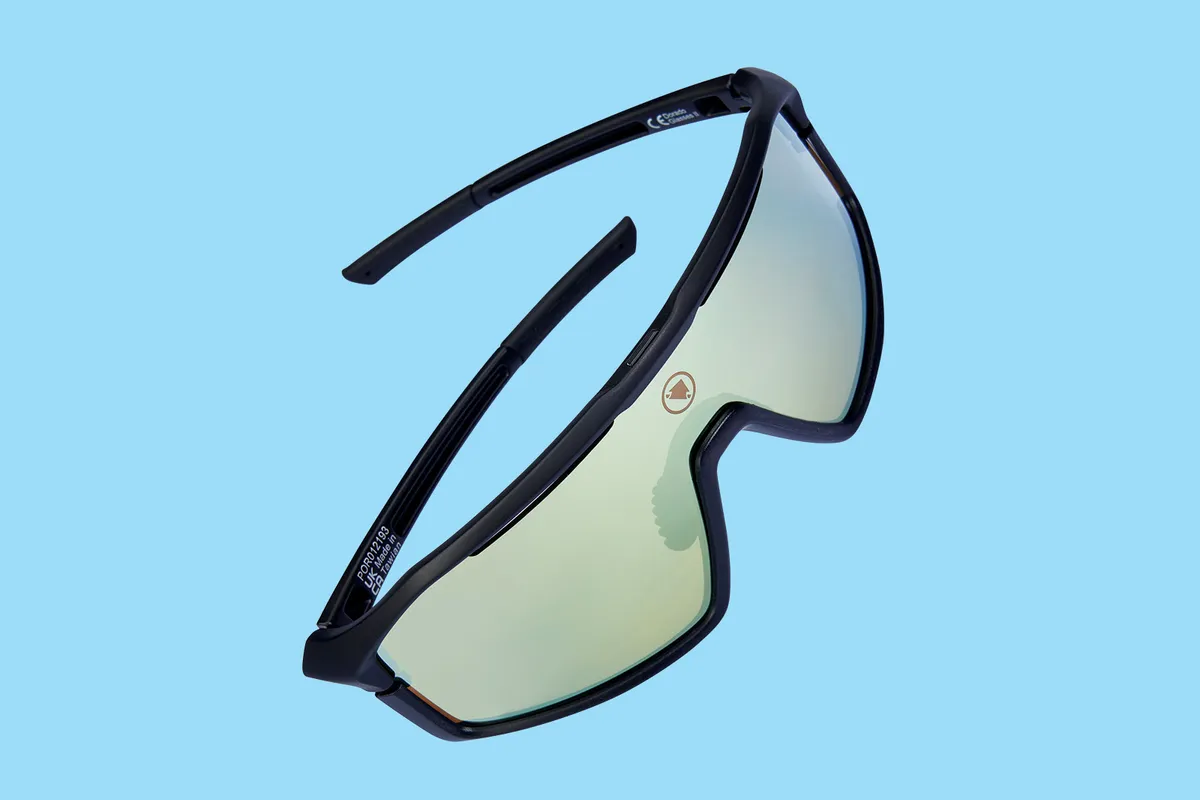
- Price: £79 / $99 / €97 / AU$144 as tested
- Pros: Lightweight all-rounder
- Cons: Very few
The Endura Dorado II cycling glasses are svelte, well-fitting and come with an array of lenses.
The lower half of the frame is removable, enabling you to adjust visibility.
Madison Crypto
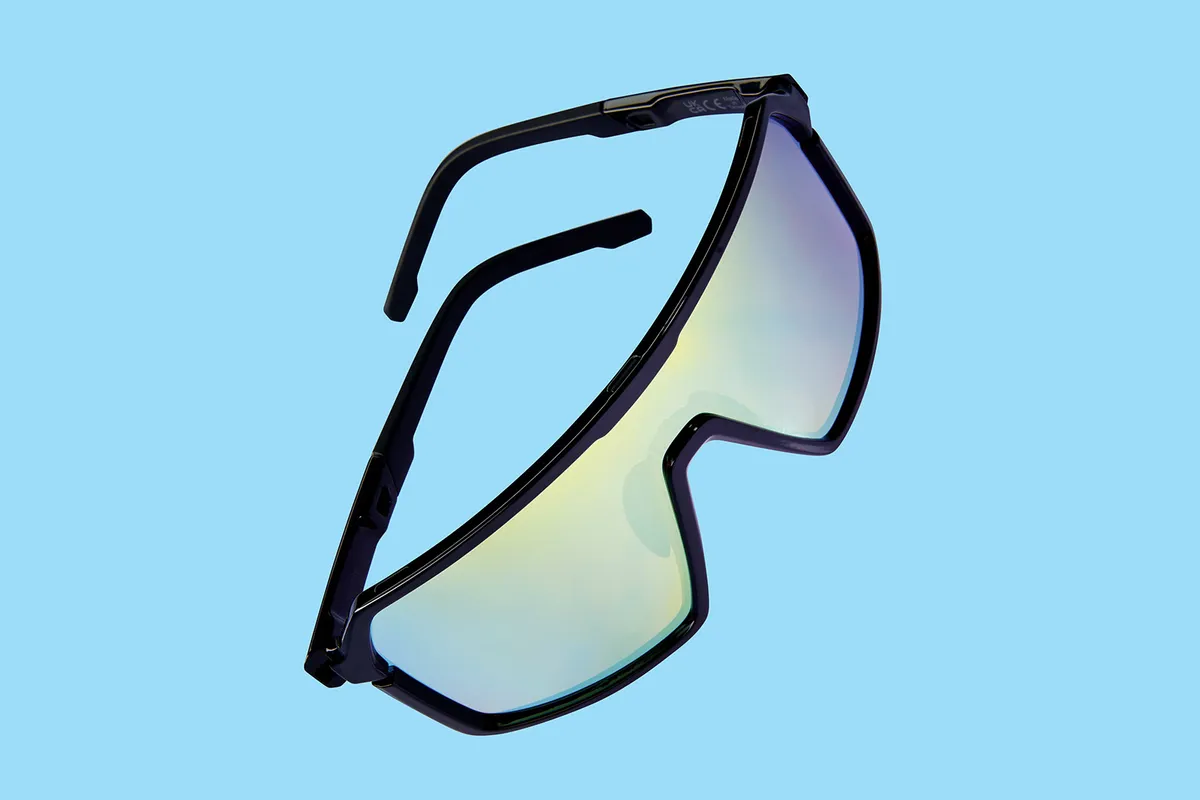
- Price: £60 / $50 / €62 / AU$74 as tested
- Pros: Multiple lens colours; quality build
- Cons: Less secure fit on smaller faces
The Madison Crypto cycling glasses should keep their value, since they pair good looks with quality.
The arms’ tips and hooks provide a very secure fit, including off-road, but perhaps less so on smaller faces.
Limar Cruz

- Price: £71 / €99.95 as tested
- Pros: Unobstructed vision; replaceable lens supplied; high lens clarity; good value
- Cons: No arm grippers; minimal space around nosepiece
The Limar Cruz cycling glasses exhibit a half-frame design, with a separate nosepiece insert that clips onto the lens.
Despite being adjustable, the nosepiece was a little tight around our tester's nose bridge.
Lacking a central pillar, the Cruz provides a clear and unobstructed field of vision.
The replaceable polycarbonate lens offers great clarity. The spare clear lens for low-light use clips in and out easily.
Limar also includes a hard case and cleaning cloth, which makes the Cruz feel like good value.
Because the arms don’t feature any grippy material, they can slip slightly when you’re sweaty and jolting over potholes.
Smith Bobcat
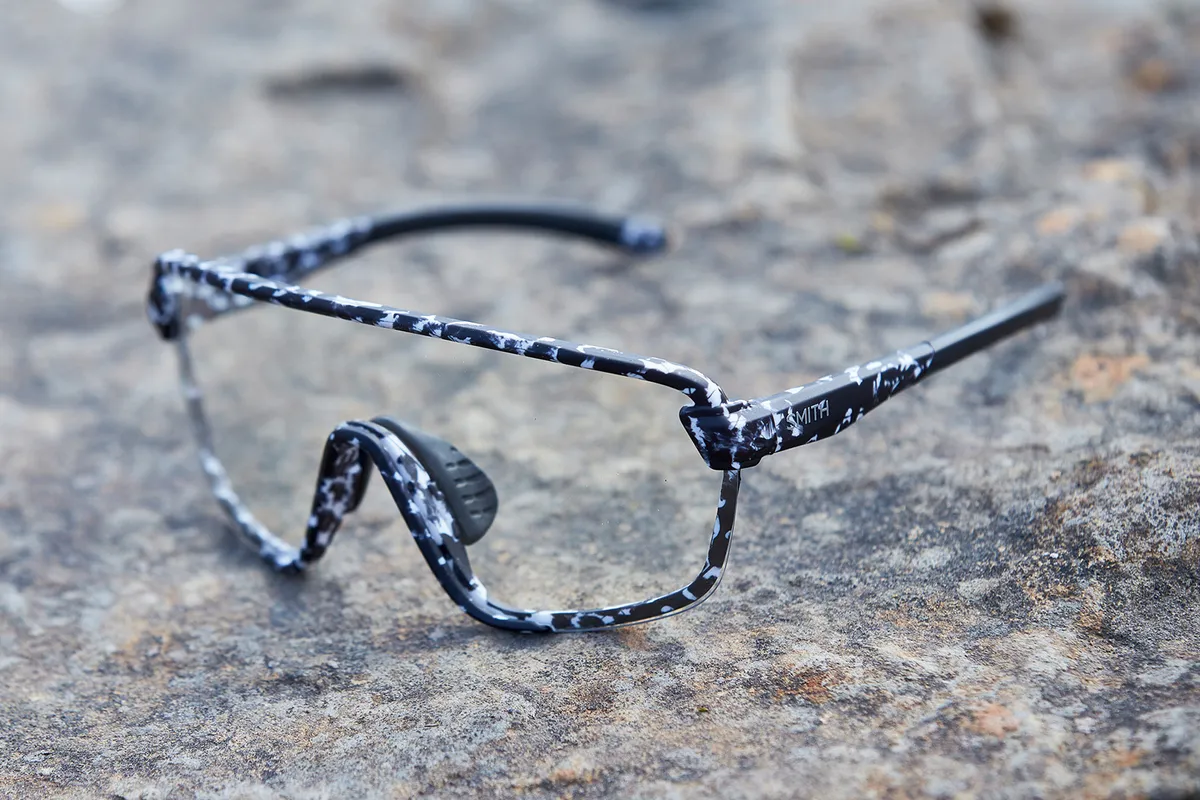
- Price: £185 / $209 / €224 as tested
- Pros: Comfort and coverage; very secure feeling
- Cons: Pricey
Smith says the Bobcat cycling sunglasses are designed for riding off-tarmac, whether that's enduro, trail or gravel – and the glasses stood up to that claim in our testing.
The large lens offers protection and visibility without proving bulky. Two tints (one for low-light and the other for bright conditions) are supplied.
The Bobcat sunglasses are so light and comfy, you'll barely notice they're on your head.
Van Rysel RoadR 900
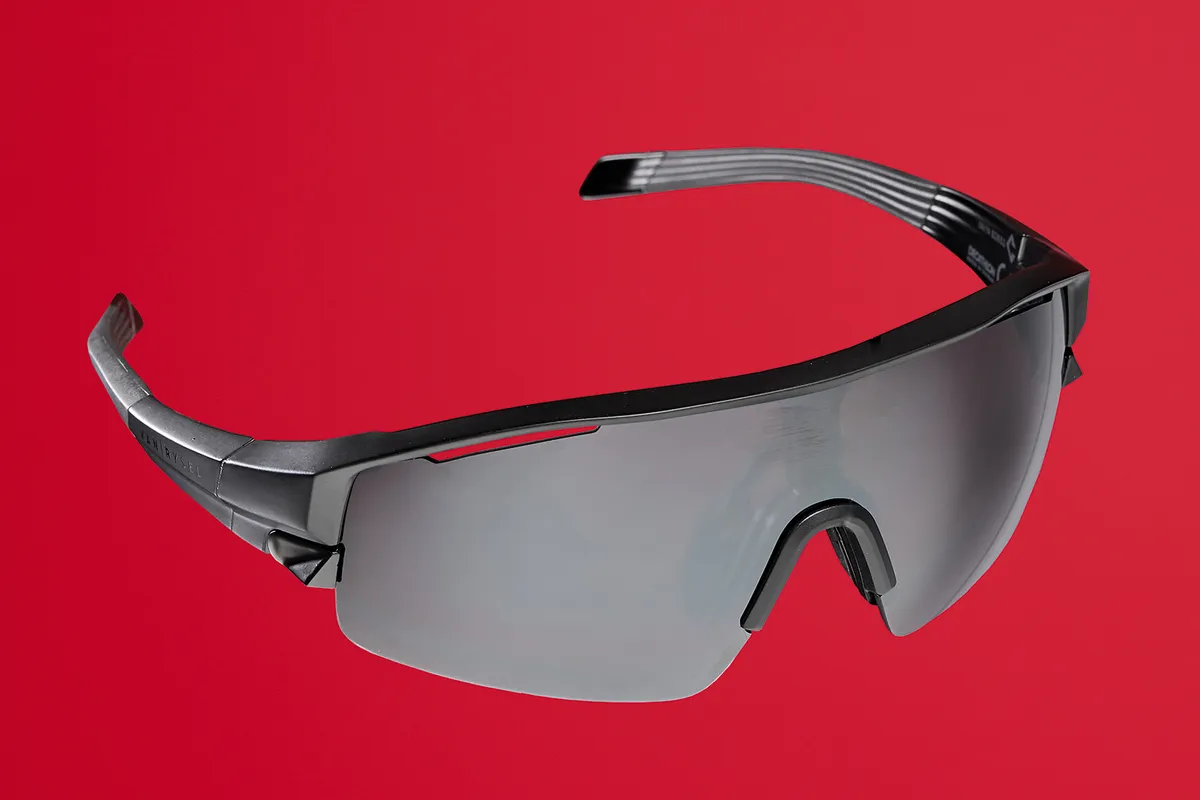
- Price: £40 / $60 as tested
- Pros: Quality lens; solid fit
- Cons: Might be tight on larger faces
The Van Rysel RoadR 900 frame arms maintain grip even when wet or sweaty.
Because the RoadR 900 cycling glasses hug the face, they may suit smaller heads.
100% Eastcraft
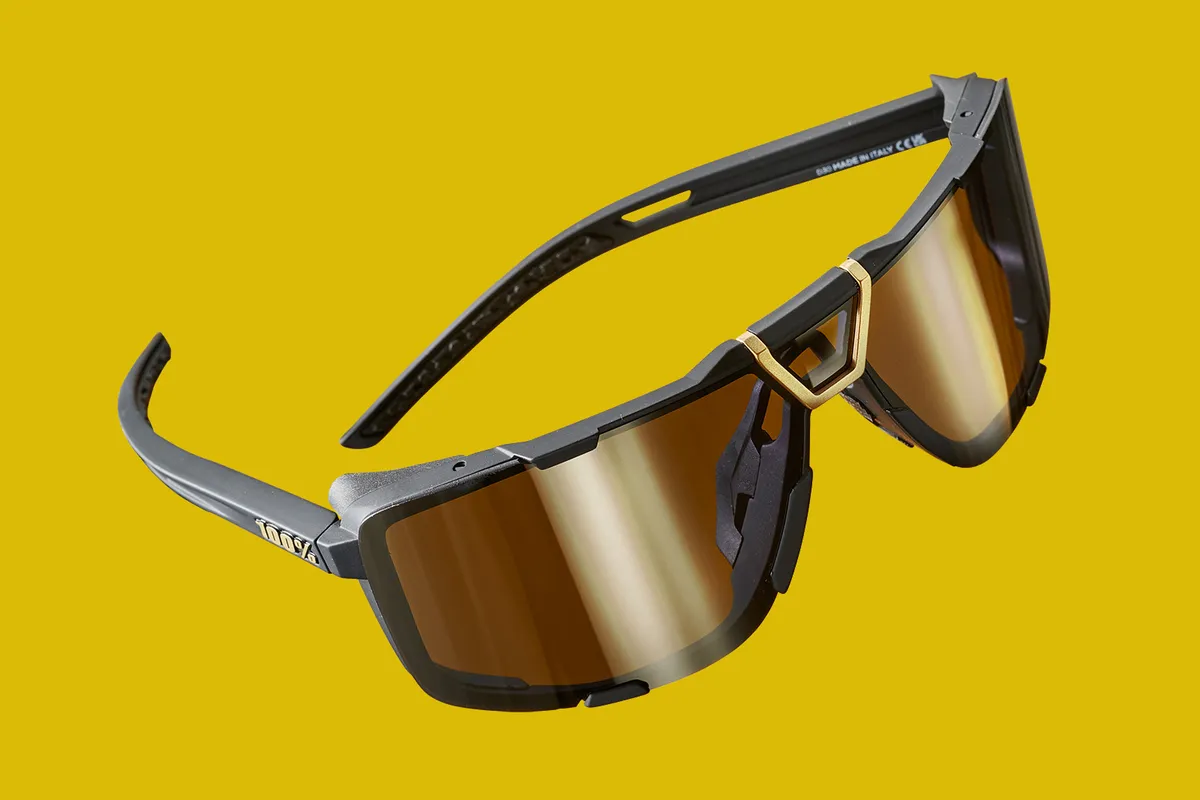
- Price: £180 / $205 / €217 / AU$324 as tested
- Pros: Secure fit and clear vision
- Cons: Pricey
The quality lens on the 100% Eastcraft glasses is very clear. It stays so when you're sweating and inferior lenses would fog up.
In worse conditions, such as wind and rain, the 100% Eastcraft frames stay in place, while the outside of the lens dispels water and grime.
100% Slendale

- Price: £84.99 to £99.99 / $99 to $119 as tested
- Pros: Decent value; nothing to block line of sight; choice of lens tint
- Cons: Spare lens not included
The 100% Slendale glasses are well-ventilated, very clear and competitively priced cycling sunglasses.
In their striking design, a boldly angular frame stands proud of the lens.
The top bar helps to shield glare from sun directly overhead, while the vent holes correspond with the lens to offer airflow.
Thanks to the frameless corners and absence of a central pillar in the frame, nothing obscures your field of vision.
Visual clarity and contrast from the Red ‘HiPER’ lens is also excellent. There are four other options to choose from with lower transmission levels.
A single (smaller) nosepiece and a cleaning bag are provided with the glasses.
Adidas SP0004 26C 00

- Price: £126 / $125
- Pros: Great fit; excellent lens quality; suit smaller faces
- Cons: Small frame intrusion on peripheral vision; nosepiece can steam up
The Adidas SP0004 26C 00 glasses offer an impressive fit, with their 26.6g weight making them unnoticeable on the bridge of your nose.
Despite their light weight, the glasses remain seated in all conditions and terrain thanks to excellent levels of grip.
We found the frame to intrude slightly on our vision and that the nose bridge area of the lens could steam up during hard efforts.
Alpina Twist Five CM+
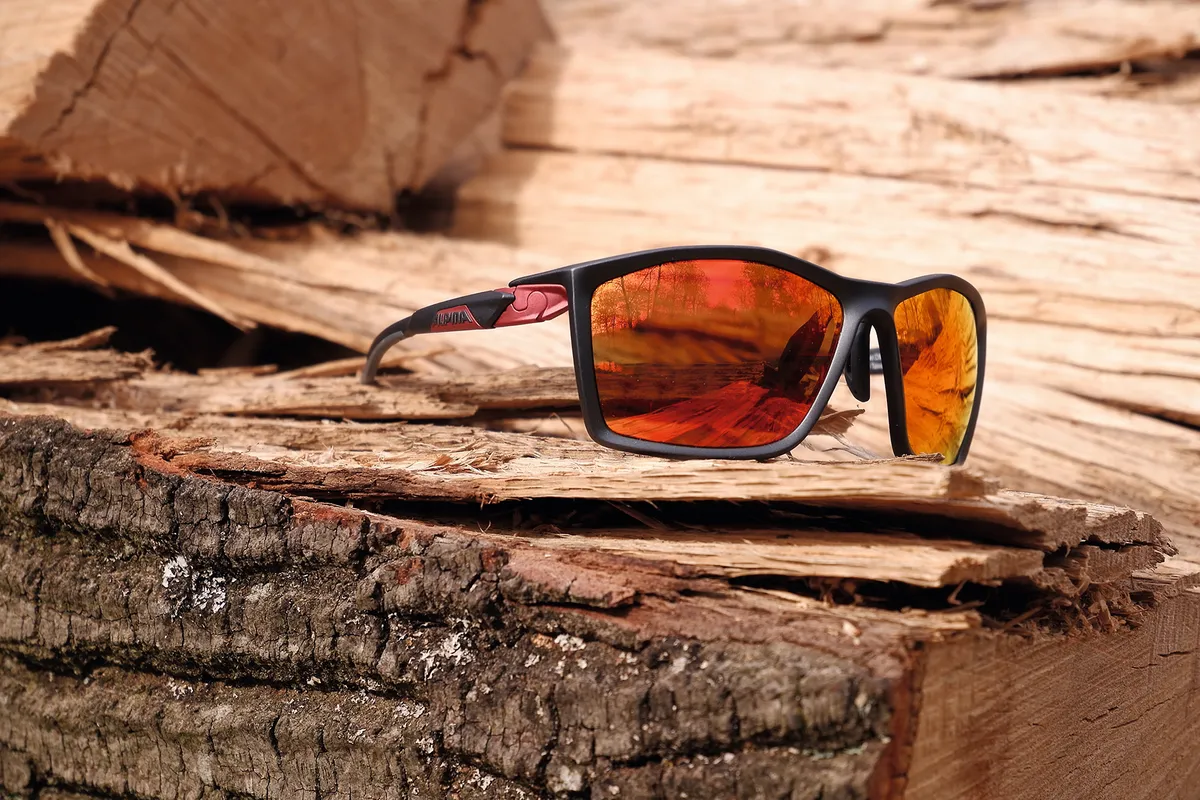
- Price: £60 / $78 / €76 / AU$112 as tested
- Pros: Excellent fit; good build quality for the price
- Cons: Not the sportiest-looking
The red mirror lens on the Alpina Twist Five CM+ is nicely curved without causing any distortion.
An adjustable nosepiece and angle-adjustable arms help give an excellent fit and security on the face.
Small screws all around the frame add to the feel of high build quality and good value.
Aesthetically, these are not particularly sporty cycling sunglasses, which could be a plus or minus depending on your taste.
BBB Avenger
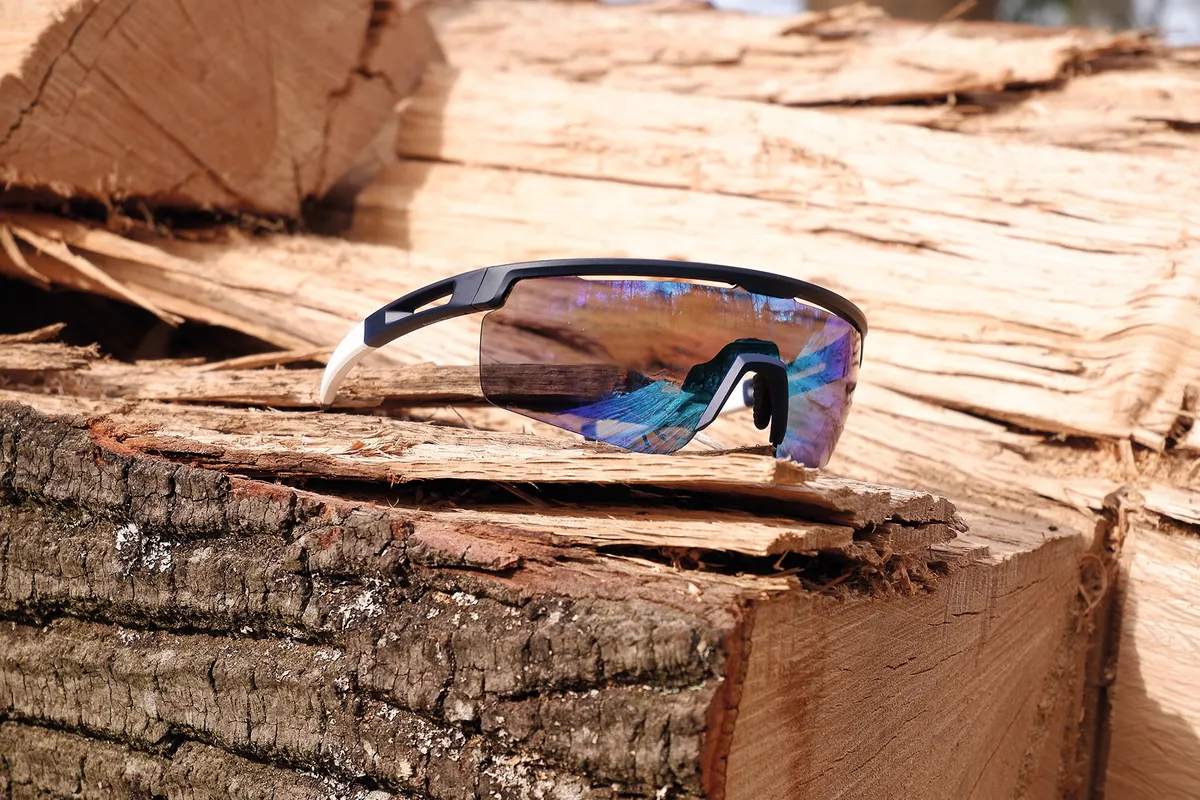
- Price: £50 / $50 / €50 / AU$71 as tested
- Pros: Three lenses included; good ventilation
- Cons: Wide frames won't fit all helmets; nosepiece needed adjustment
Despite sitting very close to the face, the BBB Avenger cycling glasses have good ventilation, thanks to cutaways at the top of the lens.
The nosepiece is adjustable, enabling you to tweak the fit to a degree.
Three lenses are included – a dark tint, yellow for low light and clear – and swapping by popping them out of the frame is straightforward.
We had no qualms with the optics either.
They are broad-framed, so the arms can interfere with some helmets, and the nosepiece needed some fine-tuning. It's hard to complain at this price though.
Endura Gabbro II
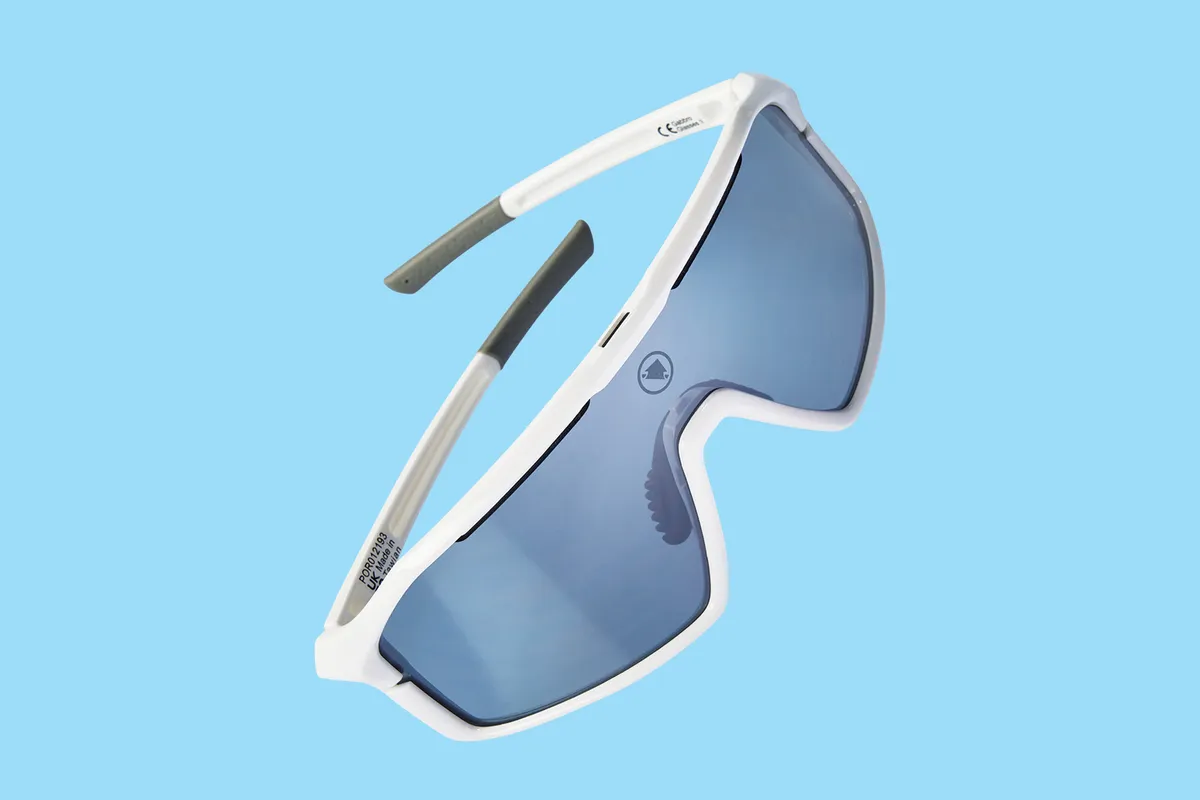
- Price: £50 / $80 / €60 / AU$100 as tested
- Pros: Precise fit; sturdy lens
- Cons: Non-replaceable lens
The Endura Gabbro II cycling glasses wrap a big, dark lens around your face, while the grippy arms and nosepiece keep them in place.
However, you can’t swap in something more translucent when the sun goes in.
Koo Demos
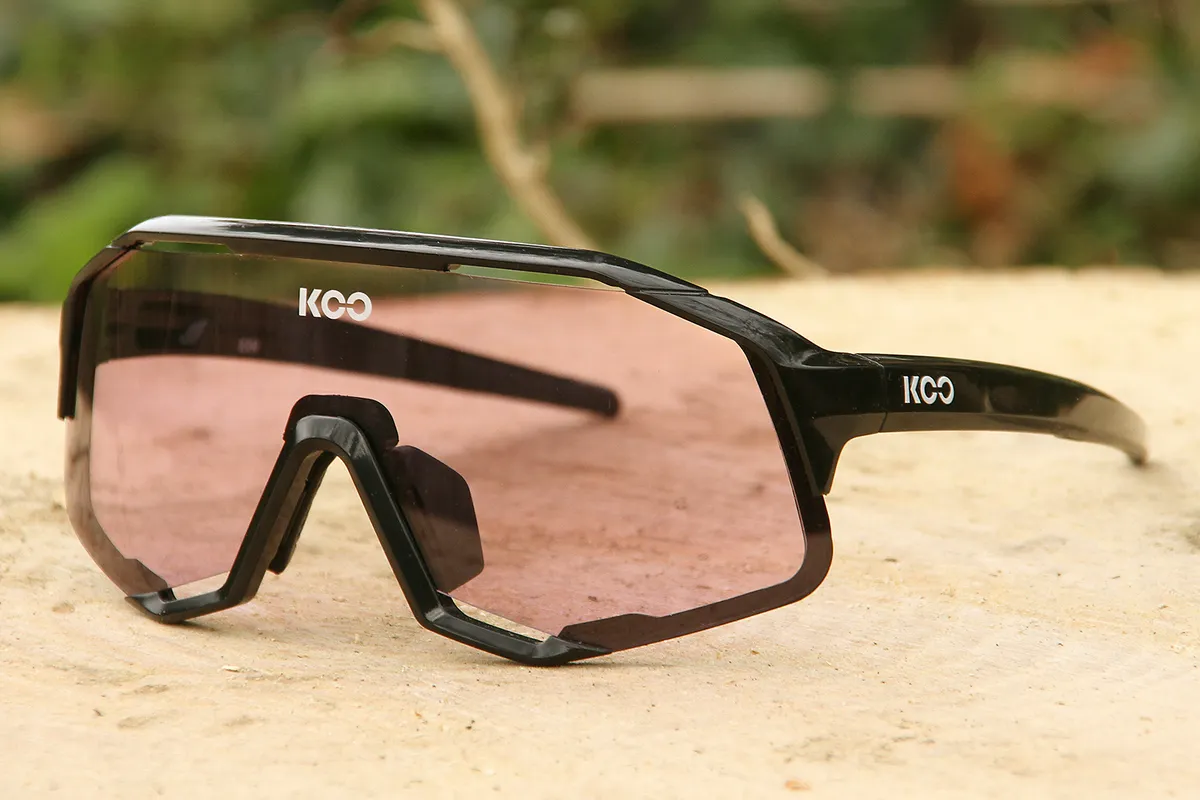
- Price: £140 as tested
- Pros: Great styling; secure fit; fantastic lens clarity
- Cons: No hard case
The angular frame looks bulky, but with a weight of 31g, the Koo Demos glasses are light, while featuring plenty of ventilation to keep fogging to a minimum.
The frames can be paired with a variety of Zeiss Polycarbonate lenses that offer great field of view and clarity. Cutaway sections at the bottom of the glasses enable you to interchange lenses, however Koo offers no clear lenses for the Demos.
Our tester liked the adjustable nose pads, helping the glasses to sit centrally on their face, but found the lack of a hard case to be a letdown at this price point.
Madison Stealth 3-pack
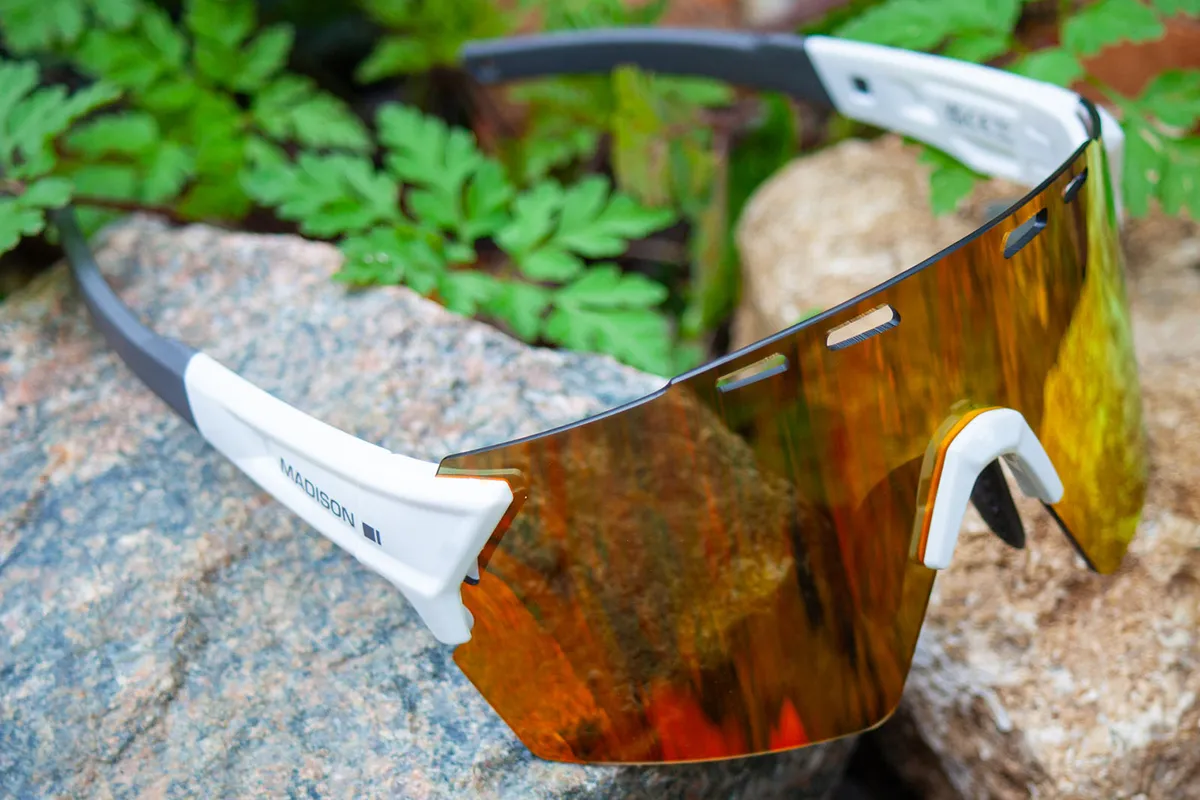
- Price: £69.99 as tested
- Pros: Features three interchangeable lenses; great value for money
- Cons: Not as secure as some
Madison’s Stealth glasses have seen a revamp from the previous design. Out goes the smaller frost-edged lens to be replaced by a more oversized lens with brow vents.
The Stealth’s frameless design remains. The lenses clip into the hinged arms directly and the hooked edge of the lens fits into the angled slot in the arm, locking it in place.
The glasses held in place well, but like other frameless designs, they are better suited to smooth road rides rather than rutted rougher gravel rides or mountain biking.
The Stealths pack in heaps of value and perform well on the road.
If you’re looking for prescription-compatible sunglasses, this is one of the most affordable options that looks good and performs well.
Oakley Castel

- Price: £185 / $224 as tested
- Pros: Trendy design; impressive lenses; high-quality feeling
- Cons: Not stable enough for offroad riding
The Castel's twin-lens design provides good ventilation through the centre of the glasses.
We found they sat well on the face on smooth roads, but once we hit bumpier terrain, the lack of nose grip caused the glasses to move around a bit.
Oakley's Prizm lens technology offers great contrast and the frame has a quality feel, while weighing in at 26.5g.
Oakley Encoder Strike Vented
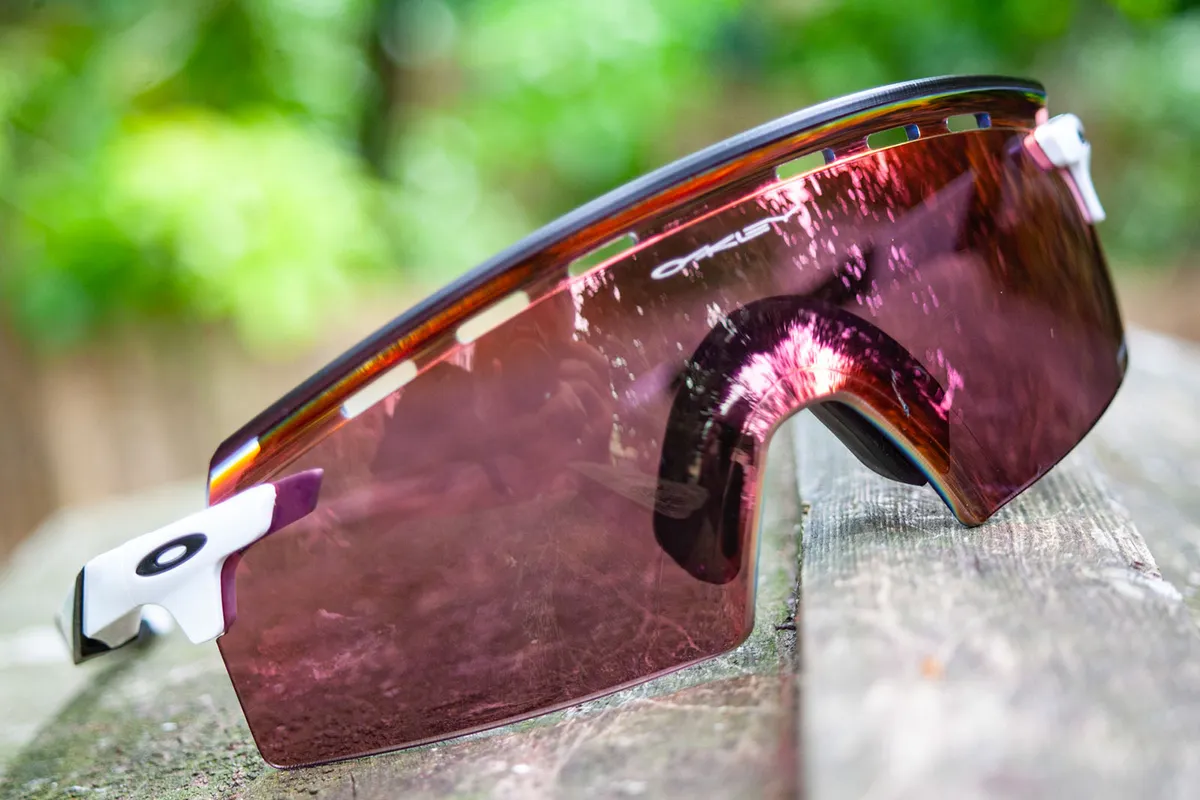
- Price: £210 / $255 / €235 / AU$330 as tested
- Pros: Vented to increase airflow and reduce fogging; futuristic yet retro-inspired look
- Cons: Large nosepiece
The Oakley Encoder Strikes are great-looking, premium-quality sunglasses with a great fit – in this instance, ideal for larger heads.
The vented brow may have an element of style over substance, but the fuller airflow meant no misting or fogging on glasses that sit close to your face.
They are certainly expensive, so we recommend trying them on first to be sure they suit you (both functionally and stylistically) before buying.
Oakley Encoder
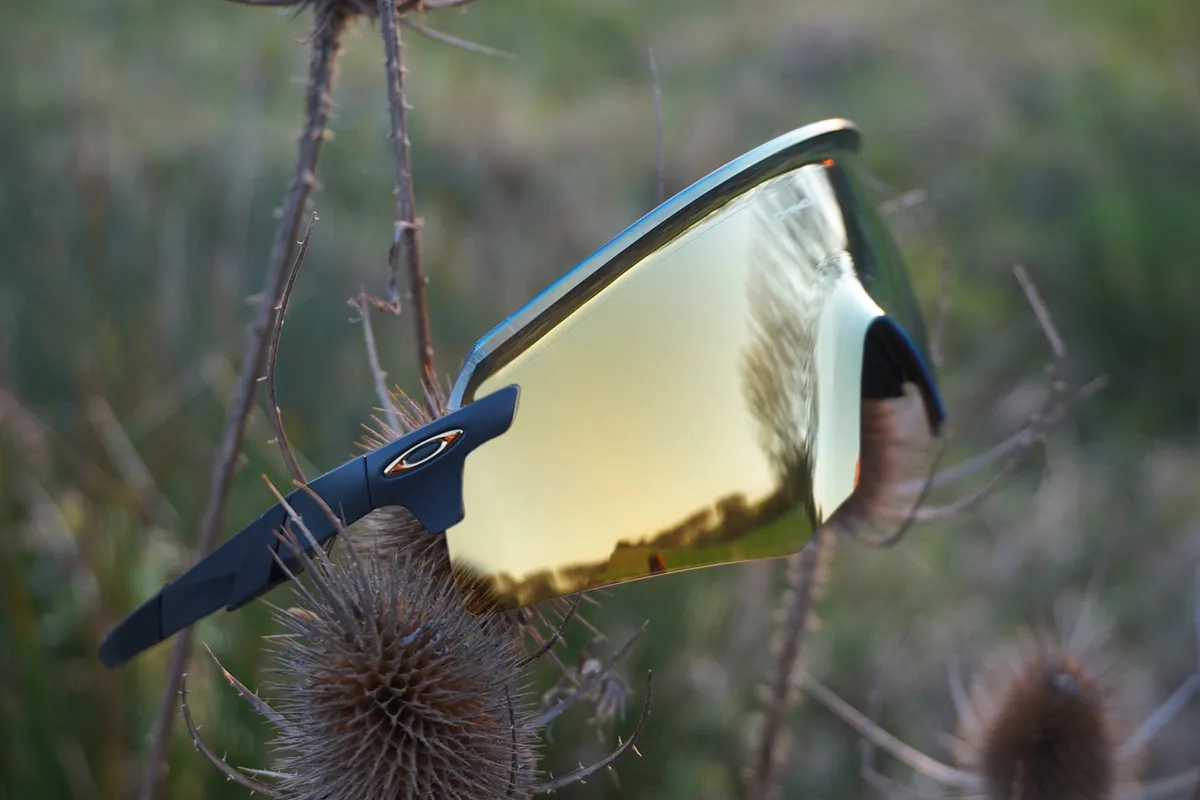
- Price: £204 / $248 / €172 / AU$266 as tested
- Pros: Solid build; decent vision
- Cons: Crude nose pad
The Oakley Encoder cycling sunglasses feel rigid despite their frameless design. Together with Oakley's high-clarity Prizm lens, this feature gives largely unobstructed and sharp vision.
But the Encoder sunglasses' nosepiece occasionally drifts into view as you ride.
At this price, this is disappointing and takes the shine off a nearly excellent set of cycling sunglasses.
Oakley Sutro Lite Sweep Ascend
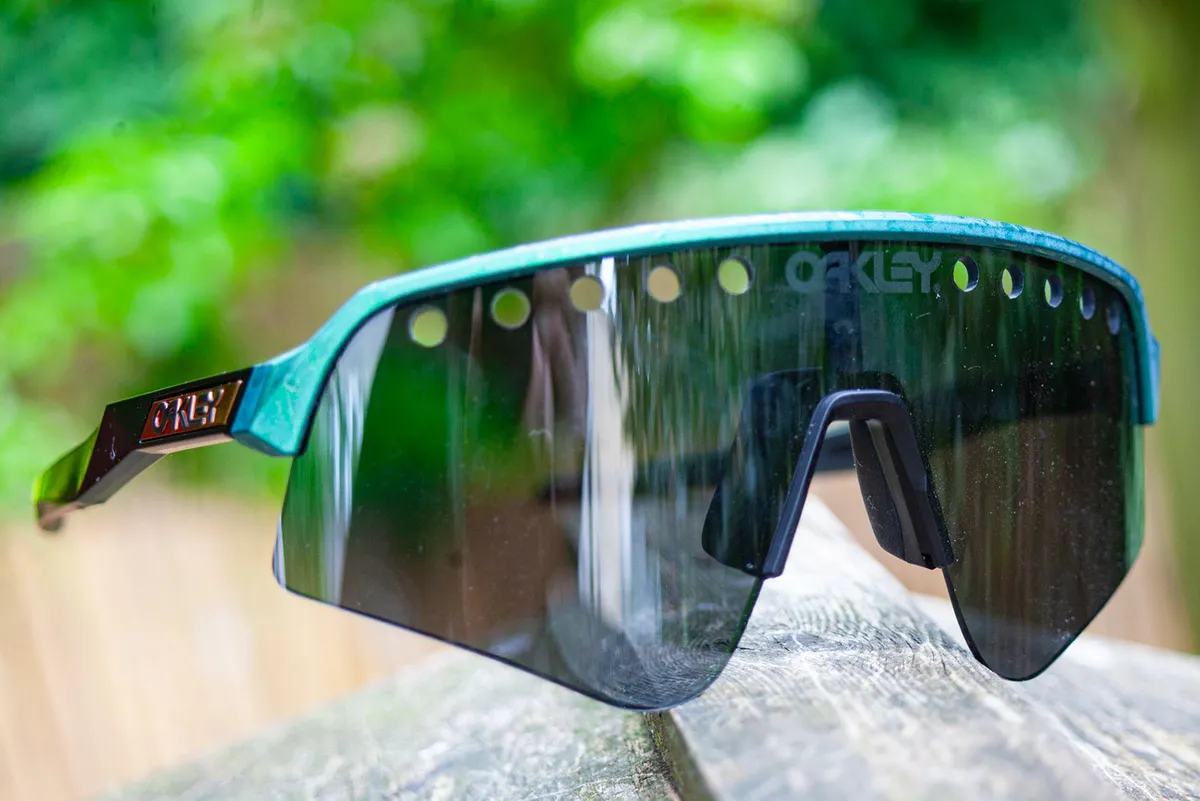
- Price: £152 / $184 / €169.99 as tested
- Pros: Designed to shave grams
- Cons: Light refraction; design not suited to larger faces
The Oakley Sutro Lite Sweep Ascend halves the frame, puts an upsweep on the lens, yet still retains the retro styling of the drilled-out brow vents.
The black-tinted Prizm lens is an absolute joy to use. There's no distortion, even at the edges, and a punchy contrast that made these great to use both on the road and in low-contrast conditions, such as woodland gravel rides.
The drilled vents reduce fogging to a minimum when working hard on hotter days, but they can occasionally catch the light on their internal edges.
We're big fans of the design, but the sweep-style lens, with its narrowing taper, is best suited to smaller faces.
Overall, the Sutro Light Sweep Ascend performs superbly in hot, sweaty conditions with minimal fogging, and stays put well on your head too.
Oakley Sutro Lite Photochromic
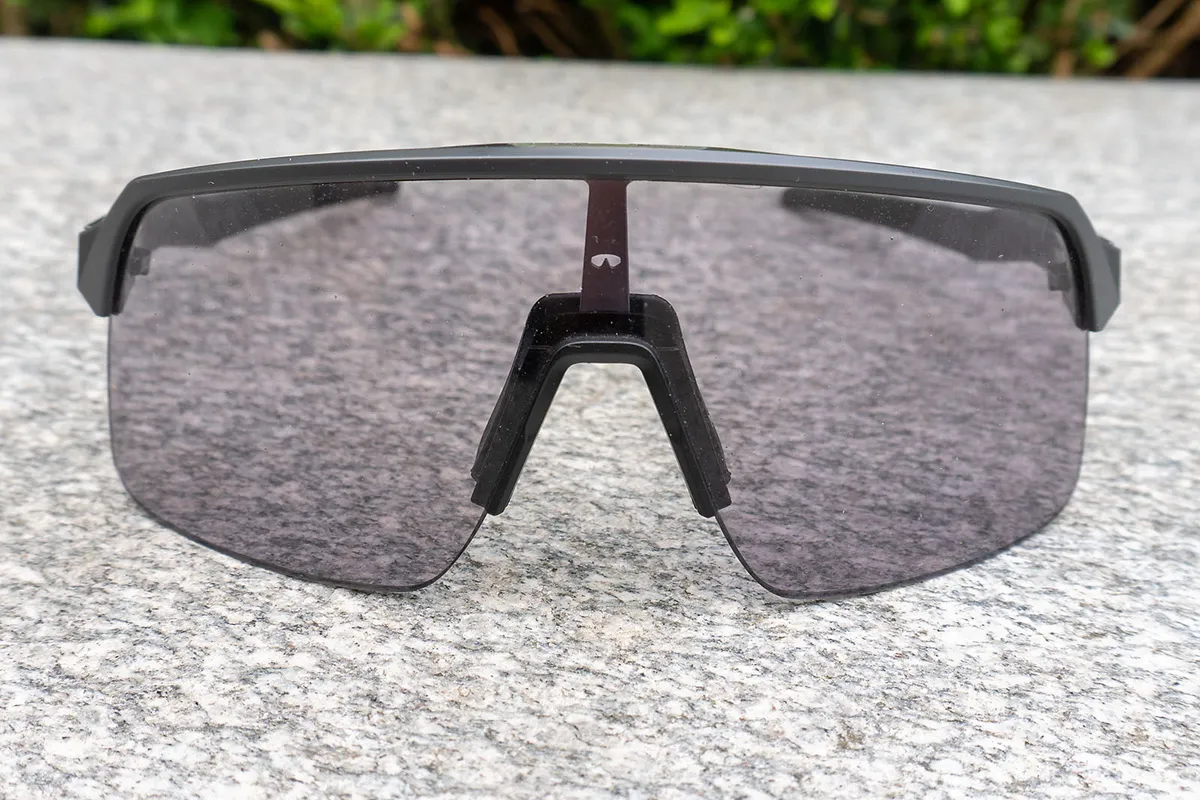
- Price: £173 / $214 / €200 / AU$279 as tested
- Pros: Great field of vision; photochromic lens offers impressive versatility
- Cons: Non-adjustable nose; lens can't get as dark as some others
Oakley's Sutro Lite is smaller than the Sutro, but still offers retro-inspired looks and interchangeable lenses.
The photochromic lenses on the model tested responded well to light conditions, although they weren't as dark as the standard lenses in the brightest of conditions.
At 33g, the Sutro Lites are as light as their name suggests, and the non-adjustable nose piece was a letdown.
Oakley Sutro S

- Price: £159 / $192 as tested
- Pros: Excellent lens quality; fantastic styling; comfortable
- Cons: Pricey; not as secure as more performance-oriented models
The Sutro S sunglasses balance sport and high-end fashion well, with plenty of performance-enhancing features on the bike and style that works off it.
The inclusion of a cleaning bag, hard case and softer noisepiece goes some way to justifying their price.
They are a little less secure than Oakley's more sport-dedicated glasses, but this didn't affect their performance too badly on challenging terrain.
Rudy Project Spinshield
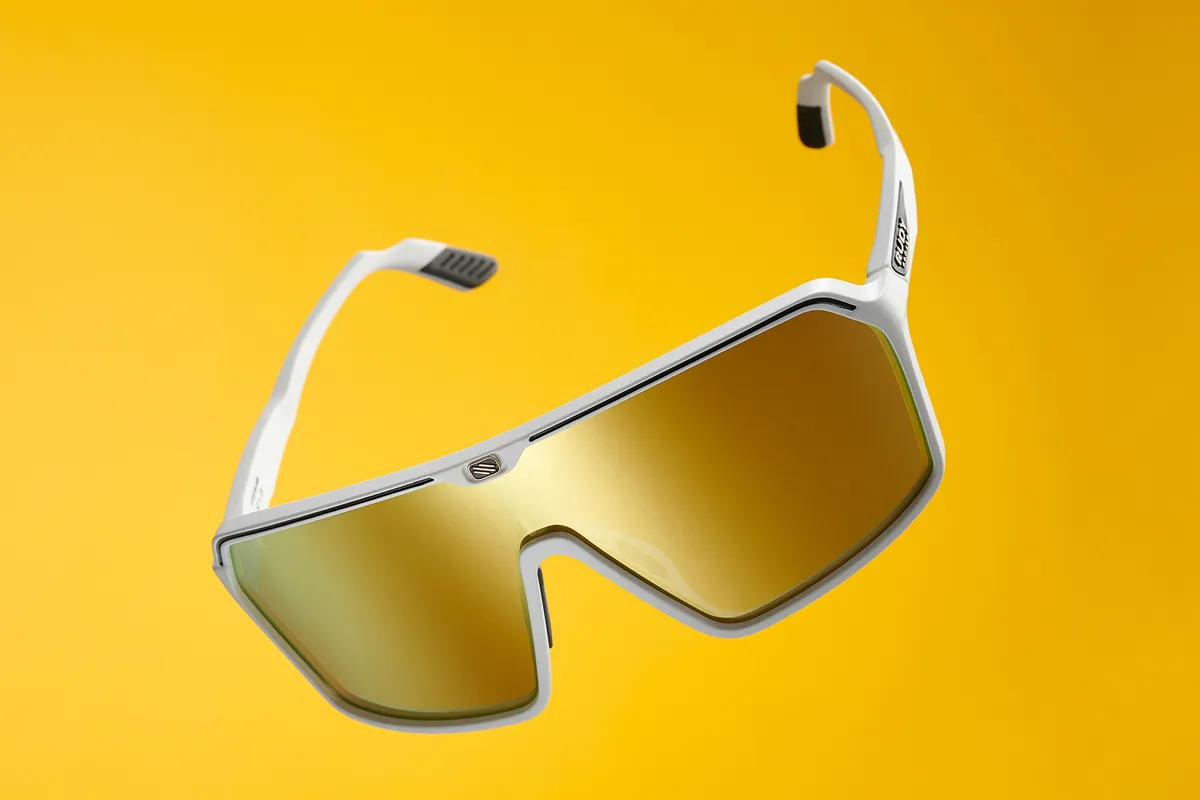
- Price: £124 / $143 / €140 / AU$163 as tested
- Pros: Huge 57mm-deep lens gives unobstructed vision
- Cons: Nosepiece is non-adjustable
The Rudy Project Spinshield's large lens is fashionable but, more importantly, it's highly effective, with good optical clarity and nothing intruding on your field of vision.
There are no vents, but the lens sits far enough away from your face that you won't miss them.
We found the fit spot-on, but the non-adjustable nosepiece means the Spinshields can bounce a little on rough terrain, making these cycling sunglasses best suited to road riding.
Sweet Protection Memento RIG Reflect

- Price: £119 / $130 / €129 as tested
- Pros: Good lens clarity; spare nosepieces included
- Cons: No vents; swap-in lens costs extra
Sweet Protection’s Memento RIG Reflect sunglasses offer fantastic clarity and consistency of tint.
The glasses' oversized, shield-style lens and a full-frame design don’t impinge on vision. The thin central pillar is easy to look past.
Although the lens lacks vents, its shape lets air flow between it and your face.
The arms are inlaid with a grippy insert and feature a snappy action. Two alternative nosepieces and a hard case are supplied, along with a cleaning bag.
13 colour variants are available, with replacement lenses available at an extra cost.
Buyer’s guide: what to look for when buying a set of cycling sunglasses
Lenses
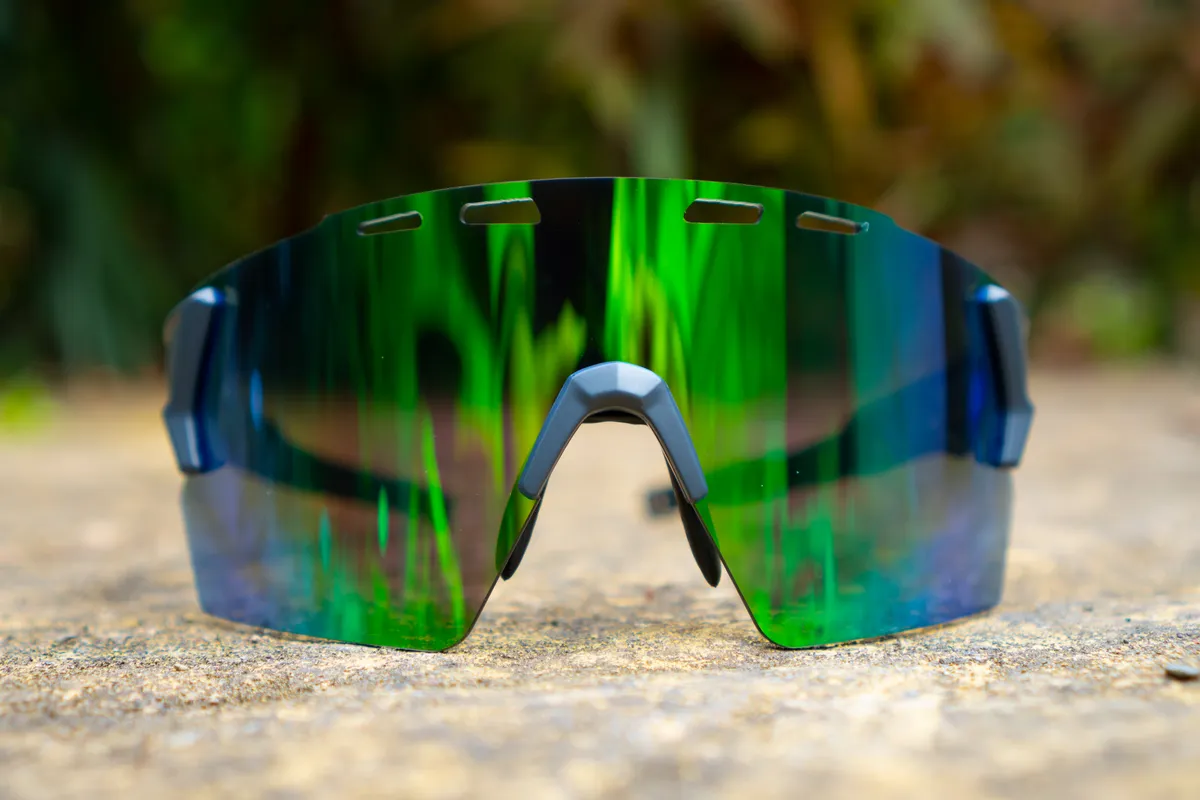
The lens is clearly the most important component in a pair of cycling sunglasses, so you need to consider your choice carefully, based on your riding style and requirements.
While mirrored lenses can look cool, they’re really only designed for use on very sunny days. If you live somewhere where it’s often dark and wet, you’ll want to consider a sunglasses package that includes multiple lens options.
Alternatively, some brands offer photochromic lenses, which react to the light level to change their light transmission value, meaning they’ll automatically get darker when it’s sunny, then clearer when it’s not.
Frames
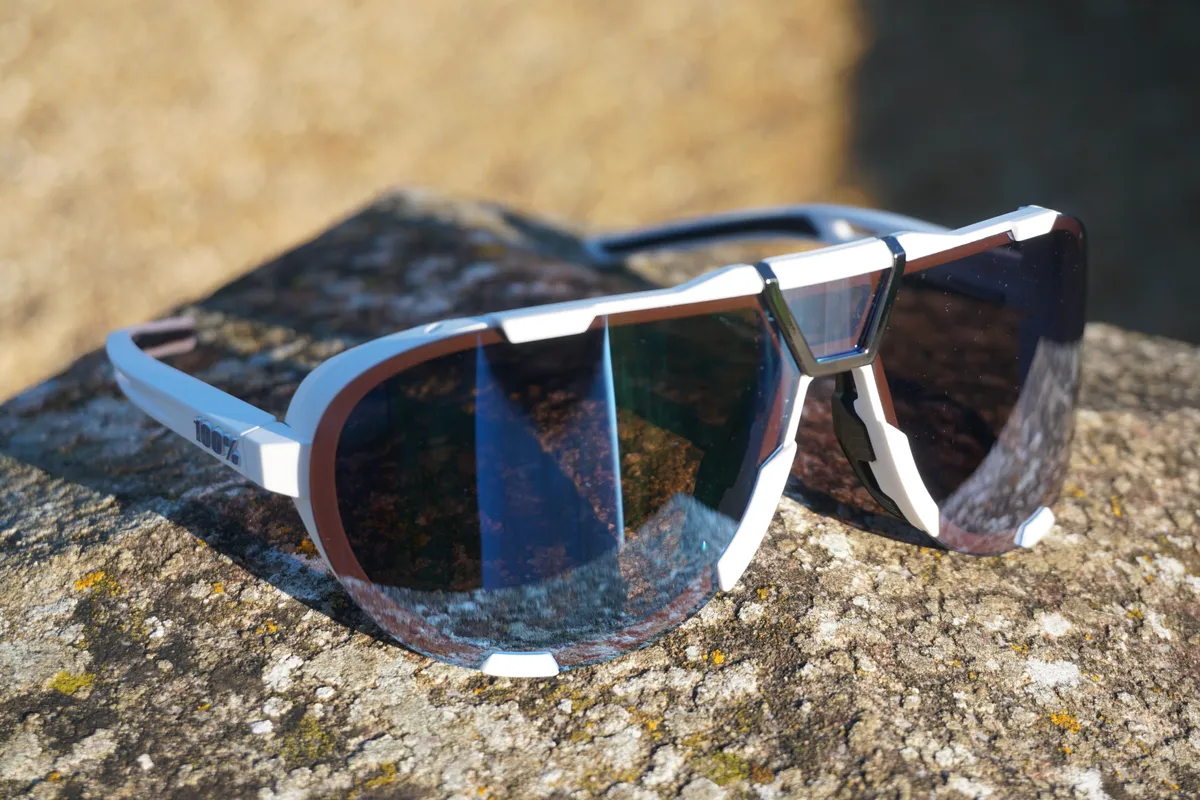
Frame choice is arguably more a matter of fashion because it will dictate the overall shape and look of any pair of cycling sunglasses.
Big, eighties-style sunglasses are back in fashion at the moment and these do have several advantages, such as massive amounts of protection and coverage, but their bold looks aren’t for everyone.
Large frames, for example, can often hover in your peripheral vision, which some riders might find annoying, whereas frameless models offer a much more unrestricted view.
Arms
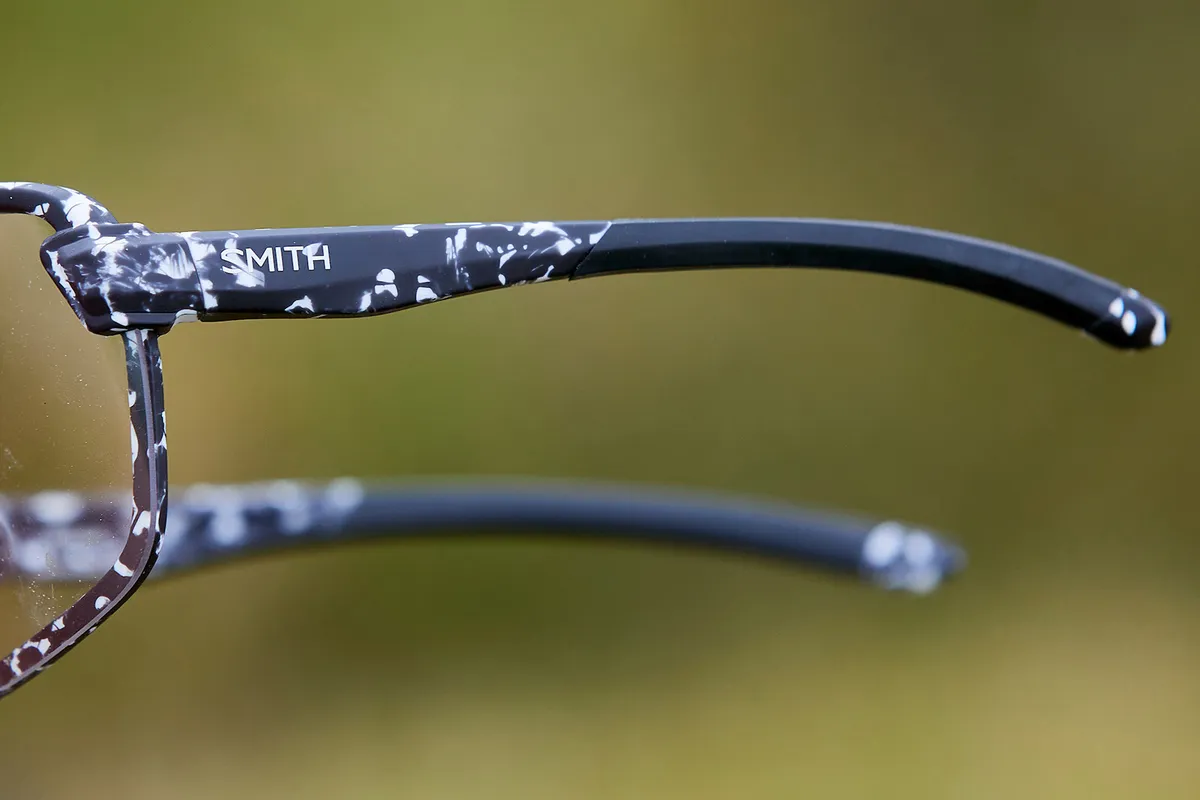
The arms of cycling sunglasses need to be robust enough to safely hold the glasses in place over even the roughest terrain. Often, tacky rubber inserts are added to increase friction without causing discomfort.
High-quality models will also have reassuringly stiff arms and hinges without any play. If you’re spending a quite substantial sum of money on sunglasses, you want to know they’re built to last.
Nose bridge
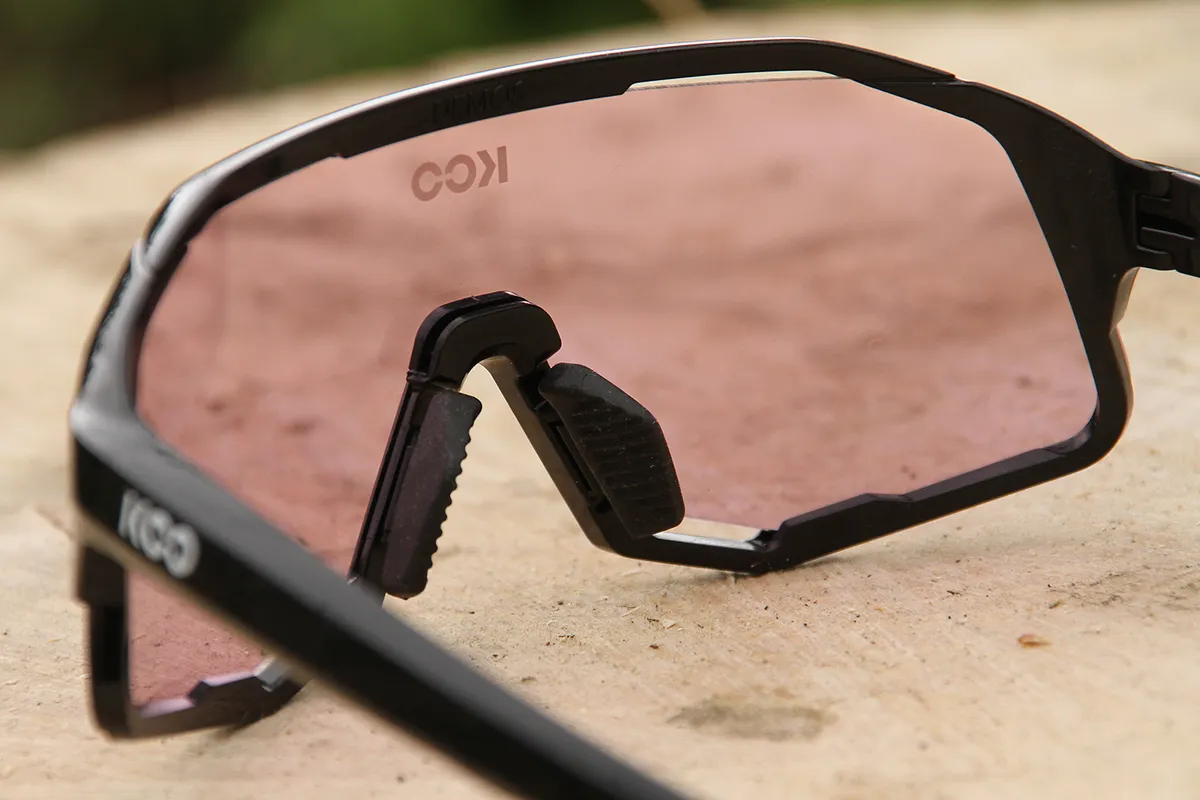
Everyone has a different-shaped face and nose, so cycling sunglasses with adjustable or interchangeable nose pieces can offer a more personalised fit.
This can be especially important on sunglasses with large frames, where it’s key to ensure the frame doesn’t impinge on your view too much.
Other features
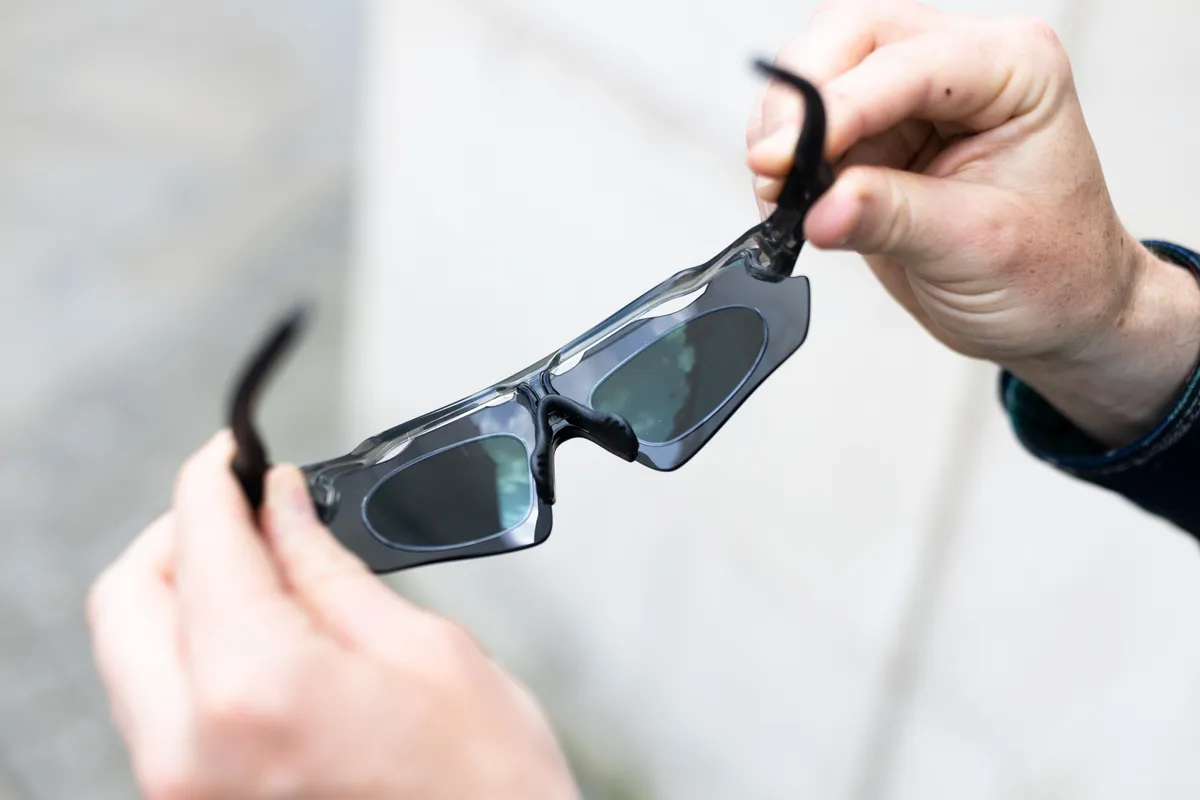
When shopping for sunglasses, it’s worth considering the overall package. While some options just include a single lens and frame, others will include multiple lens options, a microfibre bag and possibly even a hard case.
These extras all add significant value and mean you’re unlikely to need to keep spending more down the road to get, for example, a clear lens for the winter months.
Additionally, if you’re a glasses wearer in everyday life, it’s worth considering brands that offer prescription lenses.
Contact lenses and normal lenses are certainly a viable option, but most wearers will have experienced days when wearing contact lenses for long periods of time can start to get uncomfortable.
